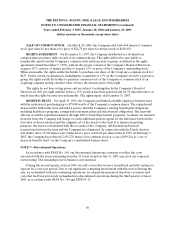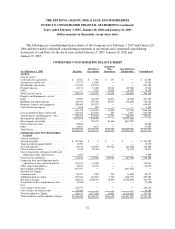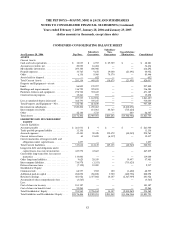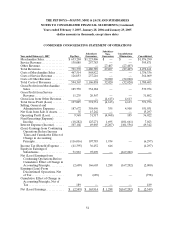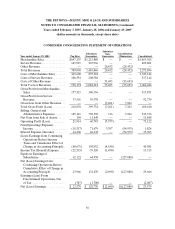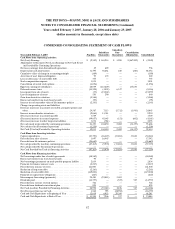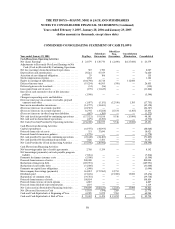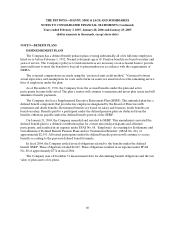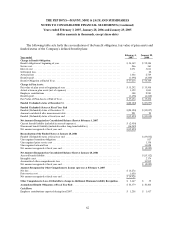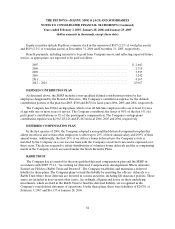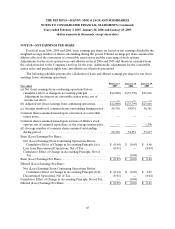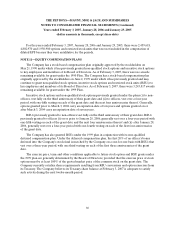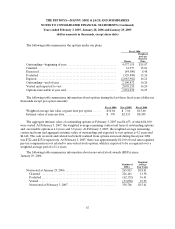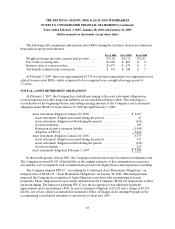Pep Boys 2006 Annual Report Download - page 99
Download and view the complete annual report
Please find page 99 of the 2006 Pep Boys annual report below. You can navigate through the pages in the report by either clicking on the pages listed below, or by using the keyword search tool below to find specific information within the annual report.THE PEP BOYS—MANNY, MOE & JACK AND SUBSIDIARIES
NOTES TO CONSOLIDATED FINANCIAL STATEMENTS (Continued)
Years ended February 3, 2007, January 28, 2006 and January 29, 2005
(dollar amounts in thousands, except share data)
60
NOTE 9—BENEFIT PLANS
DEFINED BENEFIT PLANS
The Company has a defined benefit pension plan covering substantially all of its full-time employees
hired on or before February 1, 1992. Normal retirement age is 65. Pension benefits are based on salary and
years of service. The Company’s policy is to fund amounts as are necessary on an actuarial basis to provide
assets sufficient to meet the benefits to be paid to plan members in accordance with the requirements of
ERISA.
The actuarial computations are made using the “projected unit credit method.” Variances between
actual experience and assumptions for costs and returns on assets are amortized over the remaining service
lives of employees under the plan.
As of December 31, 1996, the Company froze the accrued benefits under the plan and active
participants became fully vested. The plan’s trustee will continue to maintain and invest plan assets and will
administer benefit payments.
The Company also has a Supplemental Executive Retirement Plan (SERP). This unfunded plan has a
defined benefit component that provides key employees designated by the Board of Directors with
retirement and death benefits. Retirement benefits are based on salary and bonuses; death benefits are
based on salary. Benefits paid to a participant under the defined pension plan are deducted from the
benefits otherwise payable under the defined benefit portion of the SERP.
On January 31, 2004, the Company amended and restated its SERP. This amendment converted the
defined benefit plan to a defined contribution plan for certain unvested participants and all future
participants, and resulted in an expense under SFAS No. 88, “Employers’ Accounting for Settlements and
Curtailments of Defined Benefit Pension Plans and for Termination Benefits” (SFAS No. 88), of
approximately $2,191. All vested participants under the defined benefits portion will continue to accrue
benefits according to the previous defined benefit formula.
In fiscal 2004, the Company settled several obligations related to the benefits under the defined
benefit SERP. These obligations totaled $2,065. These obligations resulted in an expense under SFAS
No. 88 of approximately $774 in fiscal 2004.
The Company uses a December 31 measurement date for determining benefit obligations and the fair
value of plan assets of its plans.


